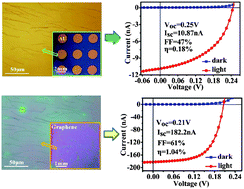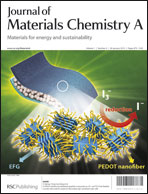Tuning the p-type conductivity of ZnSe nanowiresvia silver doping for rectifying and photovoltaic device applications†
Abstract
Applications of one-dimensional (1D) semiconductor ![[1 with combining macron]](https://www.rsc.org/images/entities/char_0031_0304.gif) 1 ] growth orientation. Significantly, the conductivities of the NWs could be tuned over 9 orders of magnitude by adjusting the Ag doping levels. Field-effect transistors (FETs) constructed from the ZnSe:Ag NWs verified their p-type nature with a hole concentration of up to 2.1 × 1019 cm−3, which is the highest value achieved for p-type ZnSe
1 ] growth orientation. Significantly, the conductivities of the NWs could be tuned over 9 orders of magnitude by adjusting the Ag doping levels. Field-effect transistors (FETs) constructed from the ZnSe:Ag NWs verified their p-type nature with a hole concentration of up to 2.1 × 1019 cm−3, which is the highest value achieved for p-type ZnSe


 Please wait while we load your content...
Please wait while we load your content...